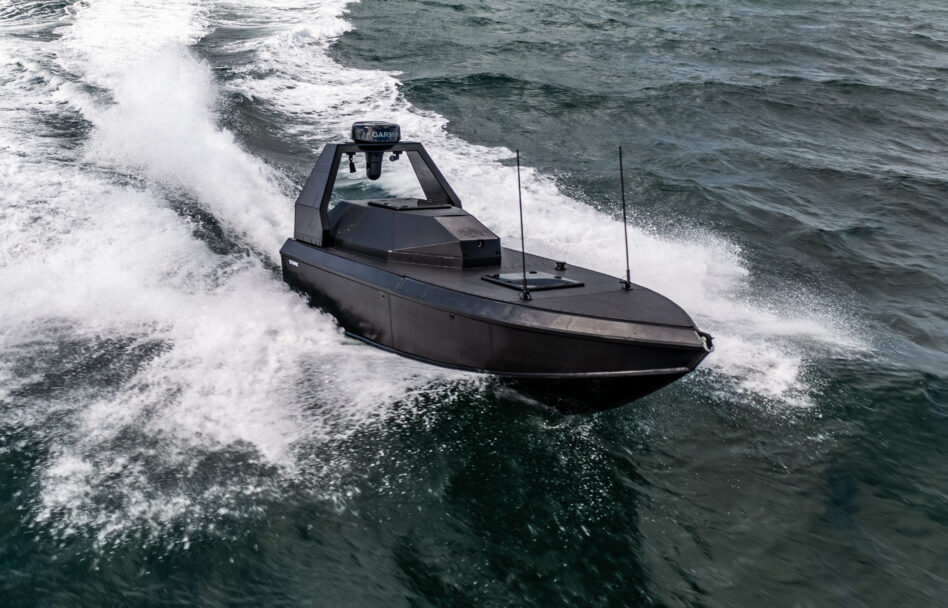Whoever thought the “maritime autonomy was all the rage” era was over, think again. This morning, European defense tech company STARK announced that they’re officially entering the maritime domain with a range of unmanned surface vessels (USVs), tested for the past month at NATO’s REP(MUS) exercise.
The drone boats—called Vanta—will come in two flavors (Vanta-4 and Vanta-6, referring to their hull sizes), and are primarily designed for ISR. The larger variant, STARK managing director Phil Lockwood told Tectonic, will also be able to carry out other spicy missions—including strikes.
“We aim to give NATO innovative capabilities to tackle threats at sea through affordable mass—deploying large numbers of vessels to patrol wider areas of responsibility at once, ensuring continuous presence where it matters most,” he said in a statement.
The boats are currently prototypes, and will be honed into production-ready variants in the next few months.
Buddy-buddy: STARK is an interesting one. The company was founded in 2024 by Quantum Systems CEO Florian Seibel, but he has reportedly stepped away from STARK’s day-to-day operations since. From the get-go, the spin-off focused on building drones and other autonomous systems explicitly for defense purposes. (Quantum Systems, also a drone giant, still bills itself as dual-use.)
In addition to Vanta, STARK has a few other products in its unmanned systems universe:
- Virtus: A VTOL one-way attack drone that can carry a 5kg (11lb) payload and dive at up to 250 kph (155 mph) with a 100km (62 mi) range.
- Minerva: The company’s bespoke Command and Weapons Control (CWC) system, which allows operators to swarm Stark drones.
But STARK definitely isn’t stopping here. The company’s goal, Lockwood told Tectonic, is to be a “challenger prime, or a neoprime, whatever word of the day you want to call it,” building a “family of [unmanned] systems” across multiple domains.
Going green: And it seems that investors like the idea. Last month, STARK confirmed to Tectonic that they’re raising $60M at a $500M valuation, backed by heavy hitters including Sequoia Capital, 8VC, Thiel Capital, the NATO Innovation Fund, In-Q-Tel, Project A, and Döpfner Capital. Total funding now sits at about $92M, according to Pitchbook data.
They’ve also massively expanded their European footprint in the past few months: they’ve now got a production facility in Swindon, in the UK, offices in Munich and Kyiv, and acquired Berlin-based autonomous flight control start-up Pleno. Rise of the robots, indeed.
Out to sea: STARK says that Vanta USVs will have a range of about 900 nautical miles, and that they’re designed for “affordable mass production.” Lockwood said that their real differentiator is the focus on ISR.
“We’ve been looking at what’s gone on in the Baltic Sea, given the threats to critical undersea infrastructure [and] the operations of the Russian shadow fleet,” he said. “There have been a variety of incidents with regard to underwater pipelines and cables…these are two vessels that are designed to operate in that environment and to be able to capture and collect information.”
The drone boats will plug into Minerva—the company’s C2 system—which will enable users to “field large groups of vessels at once, allowing them to patrol multiple areas simultaneously.” Minerva will also be the brain that will let Vanta work alongside STARK’s other platforms, including Virtus, and plug into “conventional maritime battle management platforms.”
Go boom: In case you’re new around here, everyone loves a drone boat. The war in Ukraine has shown how effective small, fast unmanned vessels can be against legacy warships (looking at you, Magura), and NATO allies are ultra-keen on building up a drone boat fleet that can keep certain bear-like adversaries at bay.
- This year’s REPMUS fielded 260 systems from 22 nations, according to NATO.
- In the UK, the Strategic Defense Review released earlier this year put massive emphasis on combining uncrewed maritime systems with traditional fleets (though budget remains TBD).
- In the US, the Big Beautiful Bill allocated a whole $1.5B to small USV production and an additional $2.1B to medium and large USV production.
For now, Lockwood said that the company remains laser-focused on Europe and NATO—the USVs will be produced in the UK, and software will be built out of the company’s hubs in Europe.
“We’re a European company, and we’re really focused on solving the capability gaps and acting as a partner for European NATO allies,” he said. The US is an “interesting market” that STARK “might” approach “at some time or another,” he said, but for now, all eyes are on this side of the pond.
Popcorn, please: In case this hasn’t occurred to you yet, this move to maritime puts STARK head-to-head with other small USV companies building in the UK, including Kraken and Saronic (who officially announced their hop across the pond earlier this year). When asked about the competition, Lockwood didn’t seem too concerned. “There’s probably a lot of room for a fair number of players here,” he said.
As for the future? Like many USV companies, STARK’s eyes seem to be on bigger vessels, too. “We’re going to be building more unmanned systems, probably bigger unmanned systems, that are also capable of providing operations in those more enduring conditions and more difficult and demanding conditions,” Lockwood said.

